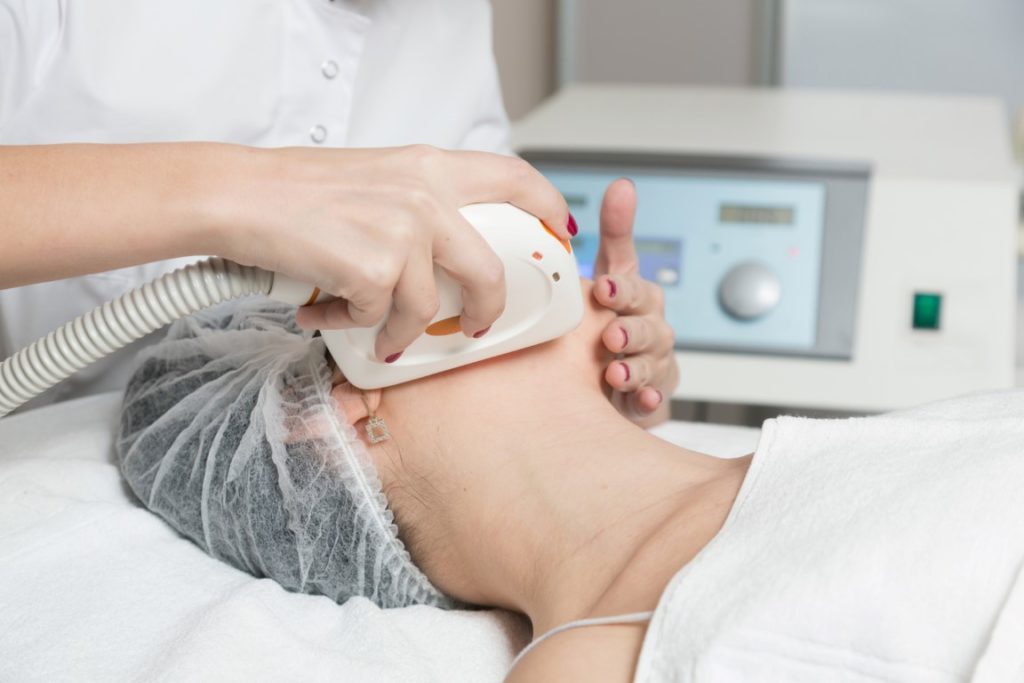Fractional laser treatment is a non-invasive treatment that uses a device to deliver a laser beam divided into thousands of microscopic treatment zones that target a fraction of the skin at a time. Fractional laser treatment is used for the treatment of: Facial lines and wrinkles (rhytides), Sun damage, Skin pigmentation associated with photoaging, Surgical and acne scarring.
Fractional laser treatment has bridged the gap between the ablative and non-ablative laser techniques used to treat sun-damaged and aging skin. Whilst ablative laser treatments work mainly on the epidermis (surface skin cells) and non-ablative treatments work solely on dermal collagen (mid-layer of skin) only, fractional laser treatment works at both the epidermal and dermal layers of the skin.
the following is the outline for fractional laser treatment-
Pre-treatment assessment/preparation
- Define problem areas and tailor a treatment pattern to target the areas for correction.
- Take pre-treatment photographs.
- Pre-treatment with bleaching cream (eg hydroquinone).
- Patient needs to remove all jewellery and makeup. Wash face with soap and water prior to treatment.
- An anaesthetic cream is applied to the treatment area. It takes about 45-60 minutes for the anaesthetic to take full effect.
- The anaesthetic cream is removed and a gliding gel is then applied to the treatment area, which helps the laser to lay down an even MTZ spot pattern.
Application of fractional laser
- The gliding gel acts as the contact lubricant for the robotic hand piece that glides across the skins surface.
- Treatment time will depend on the areas being treated, but a full face will take around 30 minutes.
- A cooling device, called a Zimmer™ machine, is used to reduce the discomfort during the procedure.
Post-treatment and recovery
- The gliding gel is washed off after the treatment.
- Patients may experience a mild sunburn sensation for about an hour after the procedure.
- Swelling is usually minimal and should resolve in 2–3 days.
- The skin will have a pinkish tone for 3–5 days.
- Within 24 hours new epidermal skin develops and the skin will have a bronze appearance that can last between 3-14 days. Flaking of the skin may also occur as new skin replaces dead skin tissue. This can be treated with a moisturising cream.
- During the healing phase and for several months after treatment, it is recommended that the treatment area be protected using a moisturising sunscreen with an SPF of at least 50+. Protective clothing and wide-brimmed hats should also be used to protect the skin from sun exposure.




